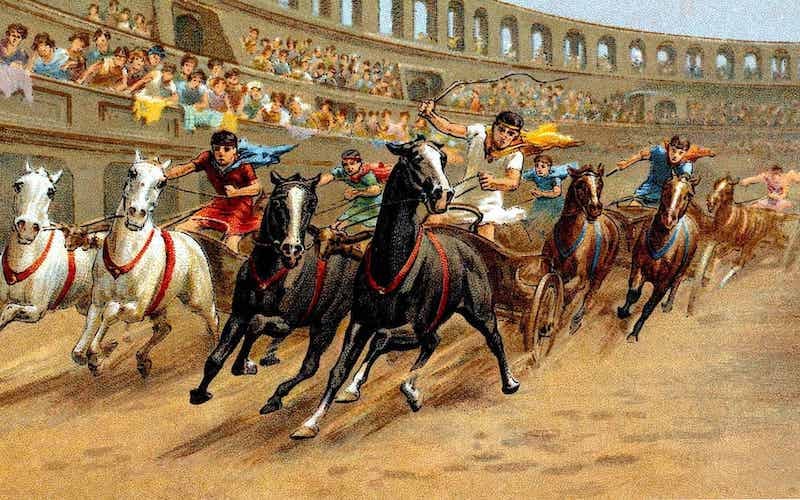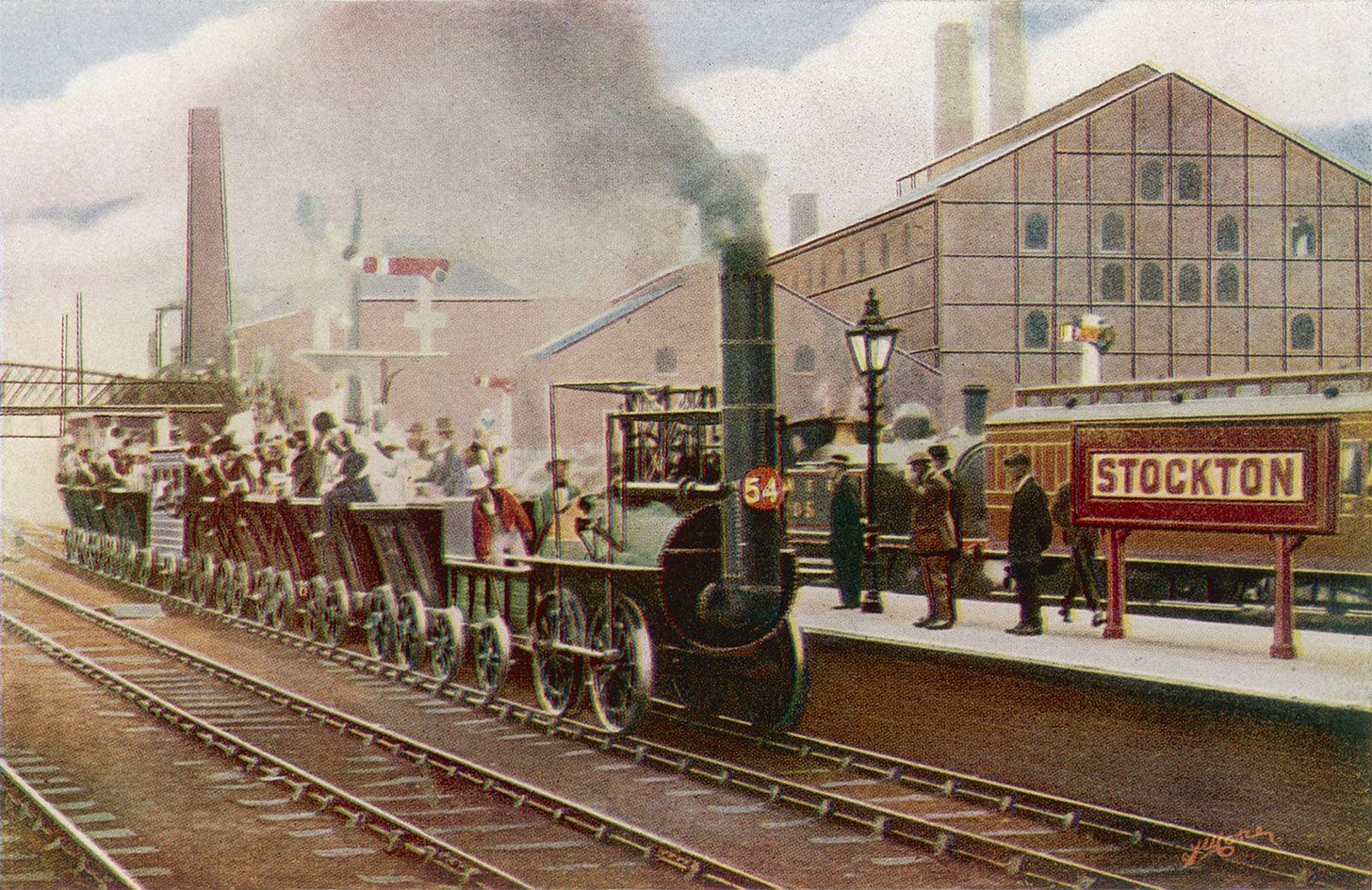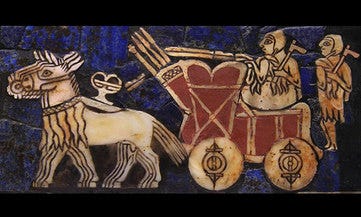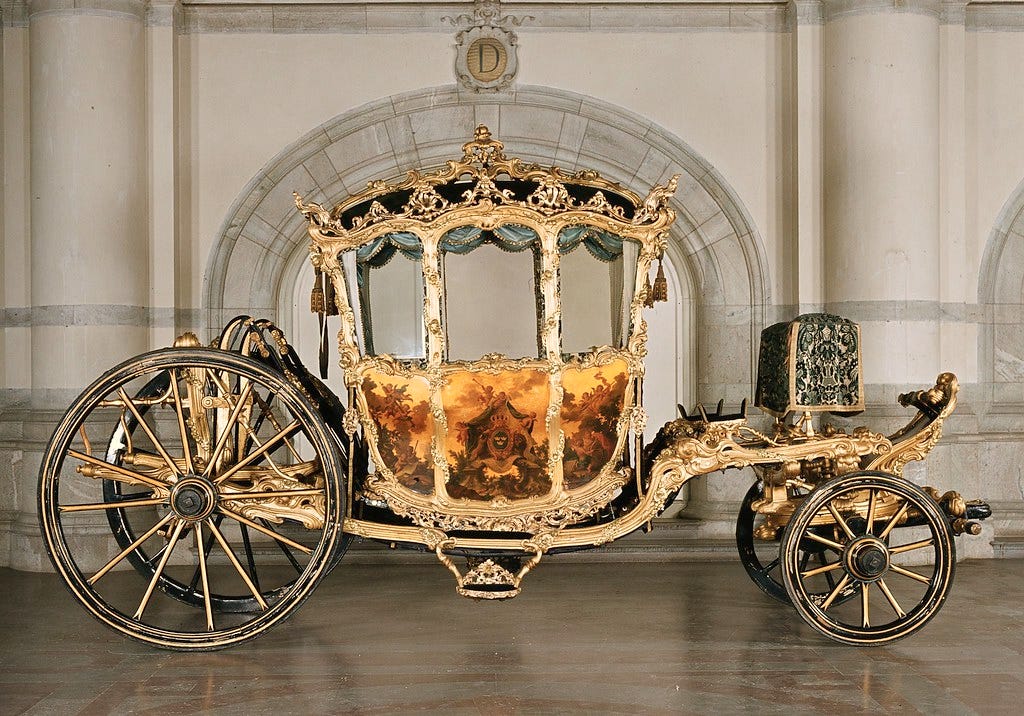From horses to locomotives: a short look into mobility.
We all know the look on a teenager’s face when we are 5 minutes late from the agreed time of pick-up. Traveling with such speed as of today, estimating arrival time with such precision, in fact traveling itself, previously was never part of human experience and within the possibilities.
Even after the invention of the wheel (likely developed around 5000 BCE), international travel was mostly confined to the elite, merchants, diplomats, and military personnel. We know two-wheeled carts were already used in ancient Egypt for both transportation and warfare, as early as 3000BCE.

The Greeks and Romans mastered the chariot, incorporating it into their military, public events and daily routines. Roman chariots especially were renowned for their speed and agility, making them suitable even for racing competitions.

After Rome, for a very, very long time, the modes of travel did not change significantly. Even by the time of Beethoven, the most common modes of transportation included horseback riding, horse-drawn carriages, and riverboats. The first steam locomotive, changing travel forever, was only available for public transportation from 1825, the first line being the Stockton and Darlington Railway in the UK.

Horseback riding was the most common mode of transportation in Beethoven’s time, especially for shorter distances. Travelers could either use their own horses or rent them along the way for longer journeys. However, this method could be physically demanding. Horse-drawn carriages offered a more comfortable and efficient means of transportation.
Horse carriages, the champions of travel
Horse-drawn carriages have a rich history that spans thousands of years, evolving from their earliest forms to the sophisticated vehicles used in the 19th century. These vehicles are the longest serving inventions in mobility!
As mentioned above, the first historical evidence of such carriages are from Egypt and Mesopotamia, from as early as 3500-3000 BCE. These chariots, two-wheeled vehicles pulled by horses, were initially used for military purposes. However, as civilizations advanced, they were involved to help in work and aspects of daily life. They also became symbols of status and wealth.

The Romans improved carriage design, introducing primitive suspension systems and enclosed bodies for comfort. Their public transportation system, primarily for government business, the cursus publicus, connected cities throughout the empire.
During the Middle Ages and the Renaissance, horse-drawn carriages became even more sophisticated and luxurious, often representing social status. Coach building techniques also evolved, leading to more comfortable and stylish designs.

A great contribution from a small nation:
In the 15th century, during the reign of King Matthias Corvinus (a Hungarian king), innovative wheelwrights from the Hungarian town of Kocs created a revolutionary carriage design. Their carriage featured steel-spring suspensions, a significant advancement in this technology. It quickly gained popularity throughout Europe, earning the name “Kocs carriage” or “kocsi szekér” in Hungarian. The English term “coach” and its counterparts in Spanish, Portuguese, German, Slovak, Czech, and Slovene – coche, Kutsche, koč, kočár, and kočija – are likely originated from the Hungarian word “kocsi”, as “of Kocs”, referring to the town where this innovative design was first developed.
The Industrial Revolution marked a turning point with the rise of steam-powered locomotives. While horse-drawn carriages gradually declined as the primary mode of transportation, they continued to be used for special purposes.
Beethoven’s travels
In the 1700s and 1800s a typical horseback rider in Europe could cover approximately 50-70 km (30-40 miles) per day. A fast messenger could travel up to 80-100 km (50-60 miles) in a day by changing horses frequently and traveling at night. Heavy carts might only achieve 30-50 km (20-30 miles) a day, especially outside urban areas where roads were often muddy.

Beethoven’s longest journeys were the two occasions when he made the distance between Bonn (his home town) and Vienna (his adopted home in his adult life). In 1787, he made his first journey to Vienna to study under Mozart. However, he returned to Bonn shortly after, due to his mother’s illness. In 1792, Beethoven permanently moved to Vienna to continue pursuing his musical career.
The exact duration of these journeys are not documented, however we can make a guess based on the travel norms of the time. Traveling from Bonn to Vienna, a distance of approximately 600 kilometers (about 370 miles), was typically done by horse-drawn coaches or on horseback. We do not know Beethoven to be a fine horseman, so most probably he took a coach, the most suitable mode for longer travels at the time.
Considering these factors, it is safe to estimate that Beethoven’s journeys to Vienna would have taken between 10 and 20 days, meanwhile various factors such as weather and road conditions could have heavily influenced the traveling time.




